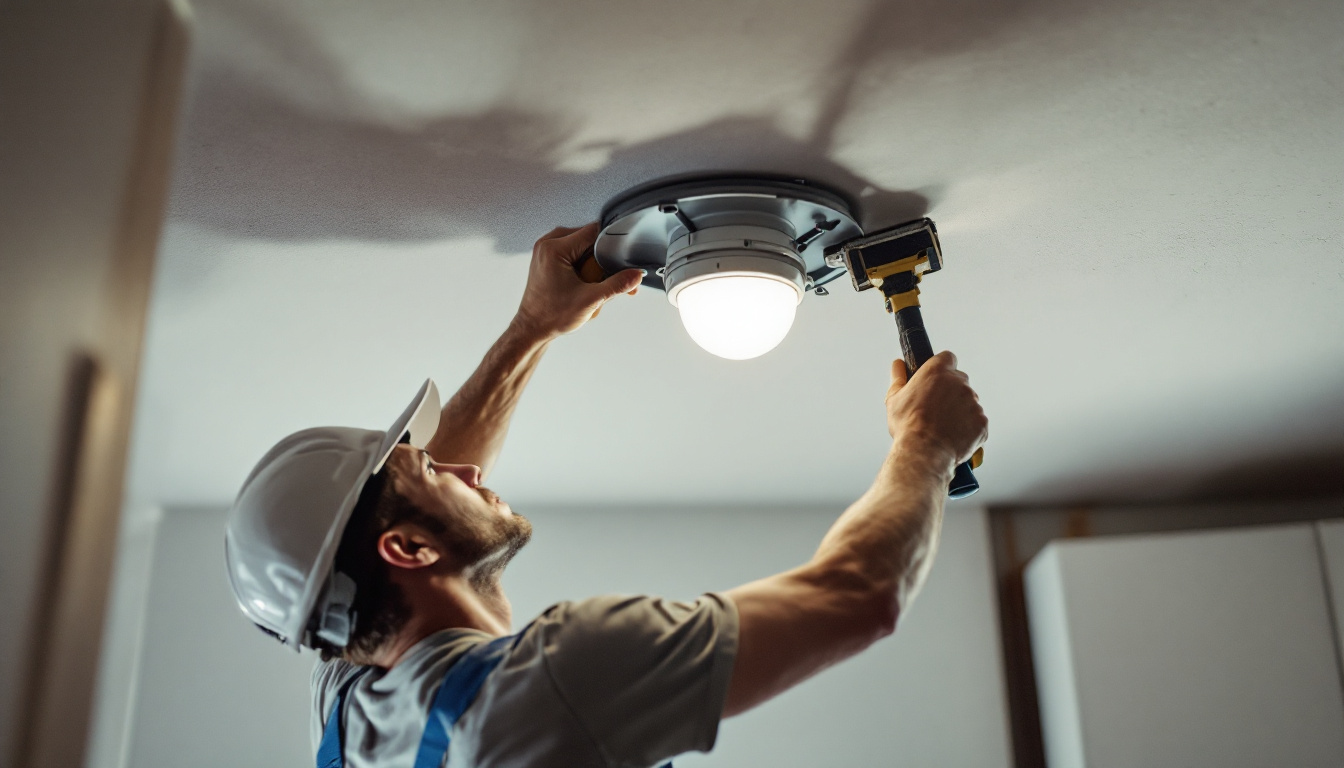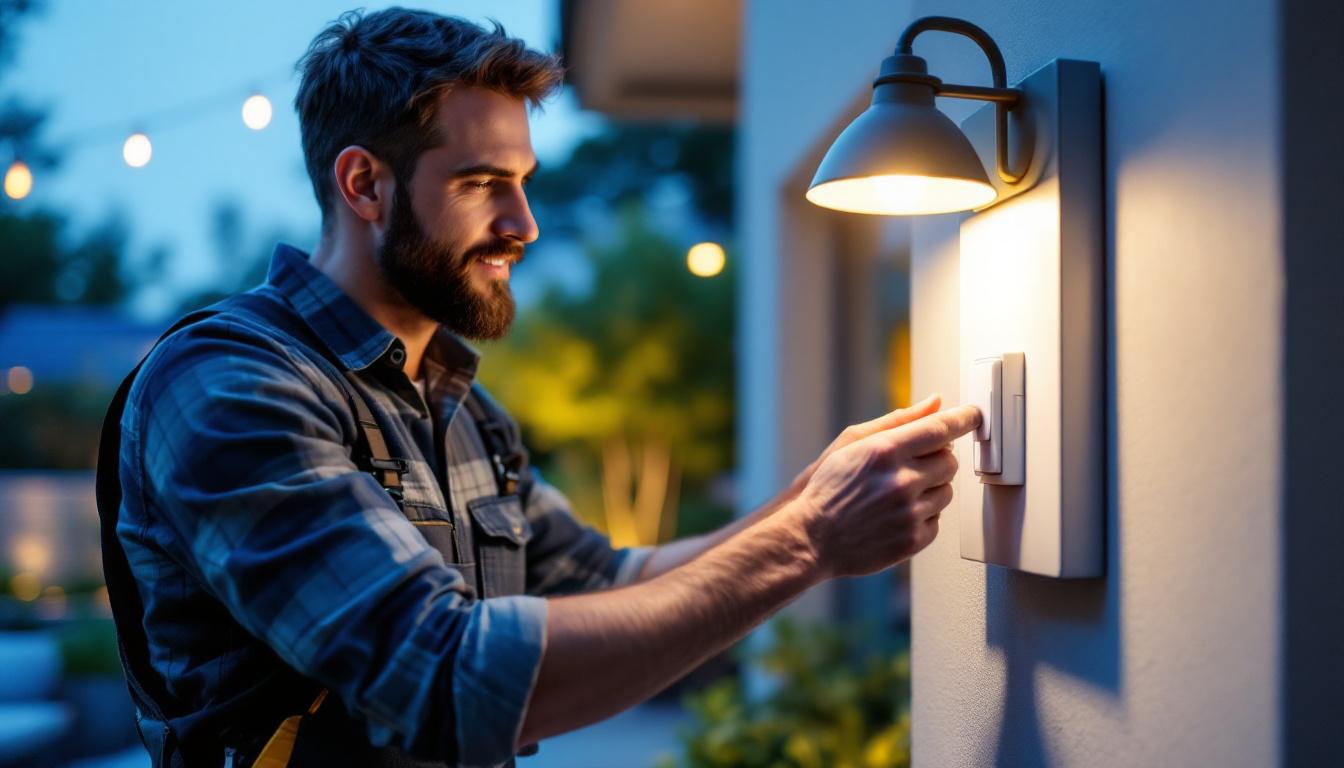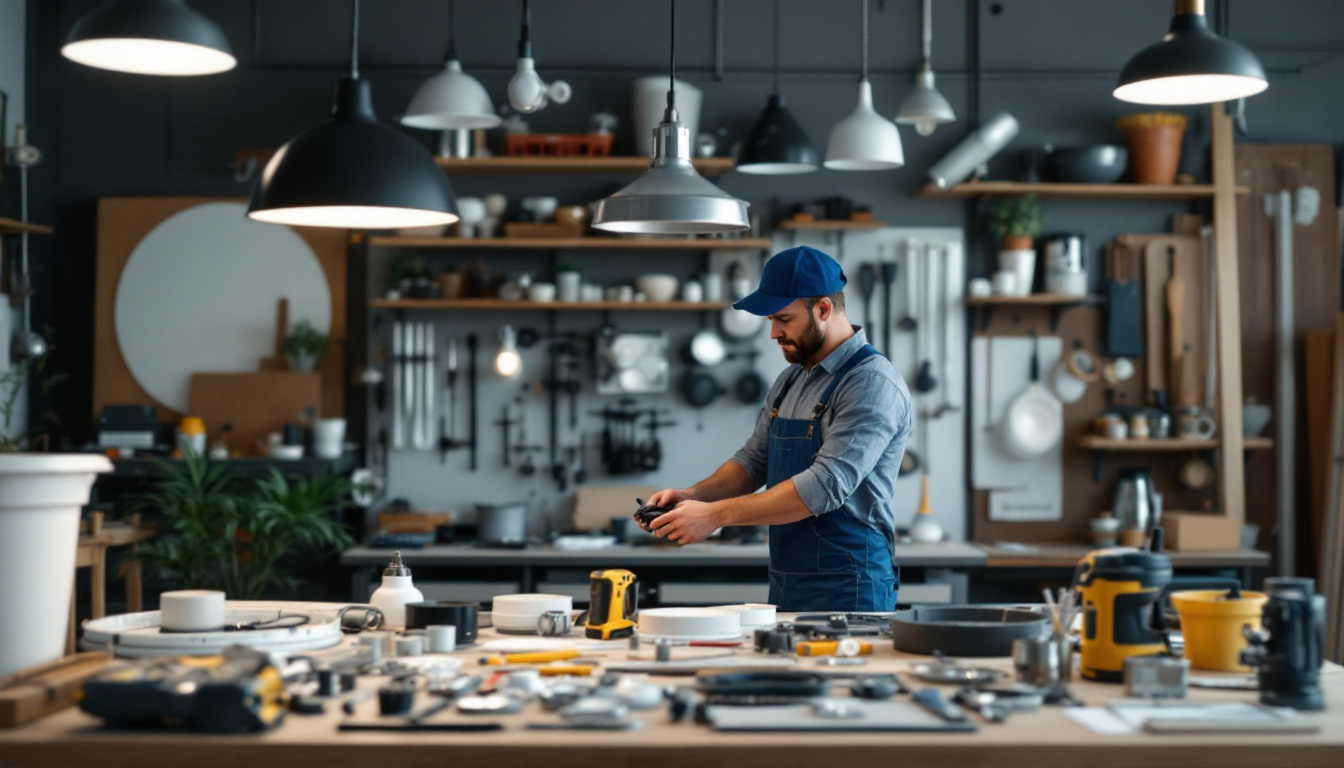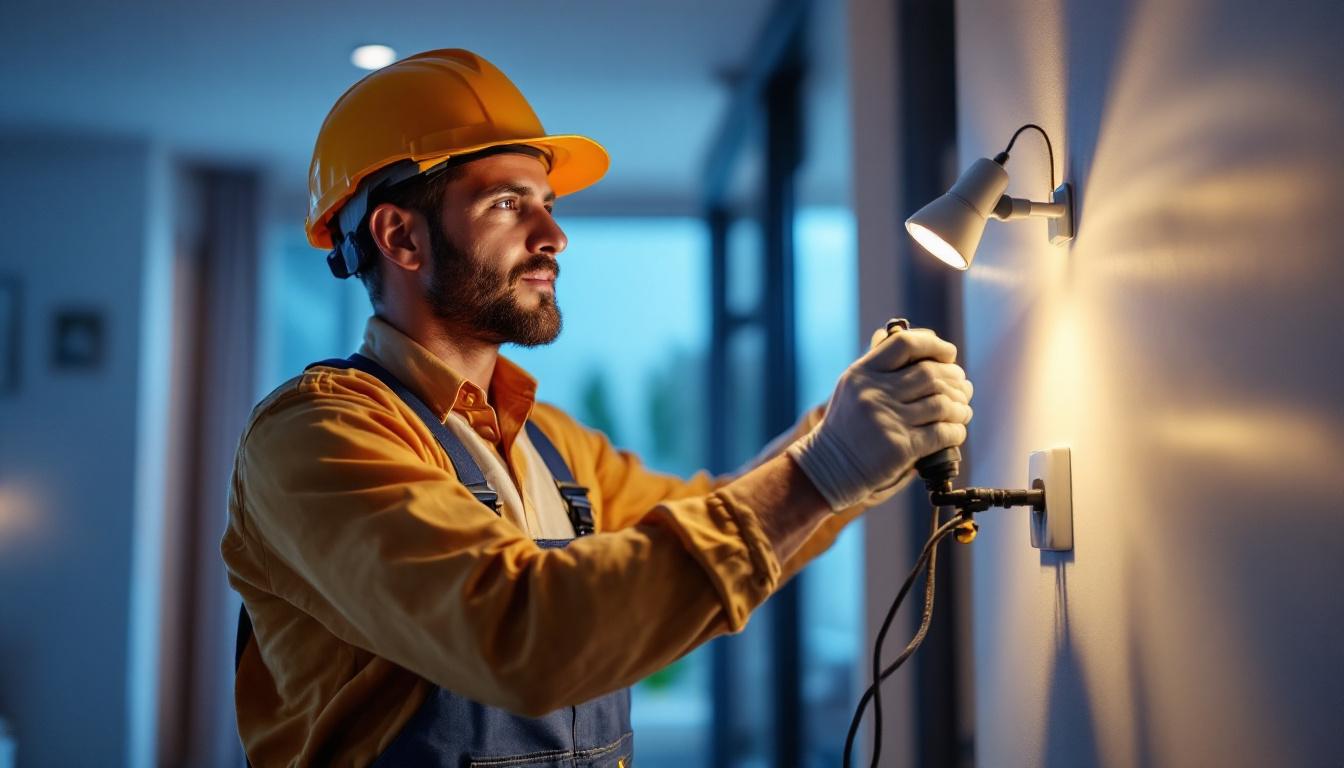
In the world of lighting installation, the mounting plate is a critical component that often goes unnoticed until something goes wrong. For lighting contractors, understanding the best practices for using light fixture mounting plates is essential for ensuring safety, efficiency, and longevity in their projects. This article delves into the best practices for mounting plates, including selection, installation, and maintenance, providing valuable insights for professionals in the field.
The mounting plate serves as the backbone of any light fixture installation. It provides the necessary support to hold the fixture securely in place, ensuring that it operates safely and effectively. Without a proper mounting plate, fixtures can become loose, leading to potential hazards such as electrical shorts or even fires. Additionally, a poorly secured fixture can result in vibrations that may cause wear and tear over time, ultimately shortening the lifespan of the lighting system.
Moreover, the mounting plate plays a crucial role in the aesthetic appeal of the lighting installation. A well-installed fixture not only enhances the functionality of a space but also contributes to its overall design. The choice of mounting plate can influence how flush a fixture sits against the ceiling or wall, affecting the visual lines and overall ambiance of the room. Therefore, selecting the right mounting plate and adhering to best practices during installation is vital for lighting contractors.
There are several types of mounting plates available, each designed for specific applications. The most common types include:
Understanding the differences between these types can help contractors choose the right one for their specific project needs. Additionally, some mounting plates come with built-in features such as cable management systems, which help organize wiring and prevent tangling. This not only simplifies the installation process but also enhances the safety and longevity of the electrical components involved. Furthermore, specialized mounting plates are available for outdoor fixtures, designed to withstand environmental factors like moisture and temperature fluctuations, ensuring that the lighting remains functional and secure regardless of the conditions.
Choosing the appropriate mounting plate is crucial for the success of any lighting installation. Factors such as fixture weight, location, and electrical requirements must be considered to ensure optimal performance.
One of the first considerations when selecting a mounting plate is its weight capacity. Heavy fixtures require sturdier plates that can support their weight without bending or breaking. Contractors should always check the manufacturer’s specifications to ensure that the mounting plate can handle the load.
Additionally, using a mounting plate that is too lightweight can lead to issues over time, such as sagging or detachment. It is essential to err on the side of caution and choose a plate that exceeds the expected weight of the fixture. This precaution not only enhances safety but also prolongs the lifespan of the installation, reducing the need for future maintenance or replacements.
The material of the mounting plate also plays a significant role in its performance. Metal plates, for instance, offer durability and strength, making them suitable for heavy fixtures and outdoor installations. On the other hand, plastic plates may be lighter and easier to work with but may not provide the same level of support.
Contractors should assess the environmental conditions of the installation site. For instance, in humid or wet areas, corrosion-resistant materials are essential to prevent deterioration over time. Additionally, the choice of material can influence heat dissipation, which is particularly important for fixtures that generate significant heat. Selecting a mounting plate that can withstand high temperatures without warping or degrading is vital for maintaining the integrity of the lighting system.
Another critical factor is the compatibility of the mounting plate with the light fixture. Different fixtures may have unique mounting requirements, including specific hole patterns or connection types. It is advisable to consult the fixture’s installation manual to ensure that the selected mounting plate aligns with its specifications.
Furthermore, adjustable mounting plates can offer flexibility in accommodating various fixtures, which can be particularly beneficial for contractors working on diverse projects. This adaptability not only simplifies the installation process but also allows for future upgrades or changes to the lighting design without necessitating a complete overhaul of the mounting system. Understanding the nuances of fixture compatibility can lead to more efficient installations and a more aesthetically pleasing final result, as the lighting can be positioned perfectly to highlight the intended areas.
Once the appropriate mounting plate has been selected, the next step is installation. proper installation techniques are vital for ensuring that the fixture remains secure and functions as intended.
Before installation begins, it is essential to prepare the site adequately. This includes turning off the power supply to the area where the fixture will be installed. Safety should always be the top priority, and ensuring that there is no electrical current flowing through the wires is crucial.
Additionally, the installation surface should be clean and free of debris. Any old mounting hardware or remnants from previous installations should be removed to create a solid foundation for the new fixture.
When securing the mounting plate, it is important to use the appropriate fasteners. Depending on the type of surface—wood, drywall, or concrete—contractors should select screws or anchors that will provide a strong hold. It is advisable to use screws that are specifically designed for electrical installations to ensure safety.
Contractors should also ensure that the mounting plate is level before tightening the screws. An uneven plate can lead to misaligned fixtures, which not only affects aesthetics but can also cause operational issues.
After the mounting plate is securely in place, the next step is to connect the wiring. This process should be done with care, following all local electrical codes and regulations. Proper wire connections are essential for the safe operation of the light fixture.
It is advisable to use wire nuts or other approved connectors to ensure secure and insulated connections. Additionally, contractors should double-check that the connections are tight and that there are no exposed wires that could pose a safety hazard.
Contractors should recommend that clients perform routine checks of their light fixtures. This includes inspecting for any signs of wear, such as loose screws, corrosion on the mounting plate, or flickering lights. Identifying these issues early can prevent more significant problems from arising.
Additionally, checking the wiring connections periodically can help ensure that they remain secure and free from damage. If any issues are detected, it is advisable to address them promptly to maintain safety and functionality.
Cleaning the fixtures and mounting plates is another essential aspect of maintenance. Dust and grime can accumulate over time, affecting the performance and appearance of the lighting. Contractors can recommend using a soft cloth and mild cleaning solution to gently wipe down the fixtures without damaging any components.
Furthermore, ensuring that the area around the fixtures is free from obstructions can help maintain optimal lighting conditions and enhance the overall aesthetic of the space.
Even experienced lighting contractors can make mistakes during the installation and maintenance of light fixture mounting plates. Being aware of common pitfalls can help professionals avoid these errors and ensure successful projects.
One of the most common mistakes is neglecting the load capacity of the mounting plate. Installing a heavy fixture on an inadequate plate can lead to disastrous consequences, including fixture detachment and potential safety hazards. Always verify the weight limits and choose a mounting plate that can handle the load.
Another frequent error is using improper installation techniques. This includes failing to level the mounting plate, using the wrong fasteners, or not securing the plate adequately. Such mistakes can compromise the stability of the fixture and lead to operational issues.
Contractors should take the time to follow proper installation guidelines and ensure that every step is executed correctly to avoid future complications.
Lastly, ignoring local electrical codes and regulations can lead to significant issues, including safety hazards and legal ramifications. It is essential for contractors to stay informed about the relevant codes in their area and ensure that all installations comply with these standards.
Regular training and education can help contractors remain up-to-date with any changes in regulations and best practices.
In conclusion, the light fixture mounting plate is a vital component that plays a significant role in the safety, functionality, and aesthetics of lighting installations. By understanding the importance of selecting the right mounting plate, following best practices during installation, and ensuring regular maintenance, lighting contractors can deliver high-quality results that meet their clients’ needs.
Awareness of common mistakes and adherence to local codes will further enhance the professionalism and reliability of contractors in the field. By prioritizing these best practices, lighting professionals can ensure that their installations stand the test of time, providing safety and satisfaction for their clients.
Ready to elevate your lighting installations with the best products on the market? Look no further than LumenWholesale for all your lighting needs. Our extensive selection of spec-grade lighting products is designed to meet the highest industry standards, ensuring you deliver safe, functional, and aesthetically pleasing lighting solutions to your clients. With unbeatable wholesale prices and the convenience of free shipping on bulk orders, LumenWholesale is your go-to source for quality and affordability. Don’t compromise on your lighting projects—choose LumenWholesale for Wholesale Lighting at the Best Value.

Discover the essential checklist for lighting contractors when selecting and installing exterior timer switches.

Discover the essential components of hanging light fixtures and why understanding them is crucial for lighting contractors.

Discover the transformative impact of hanging LED lights for lighting contractors.

Discover how the Can Light Kit is revolutionizing the lighting industry by streamlining installation processes for contractors.